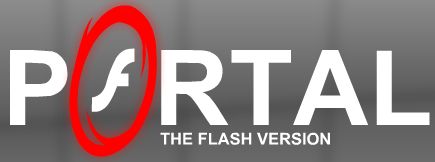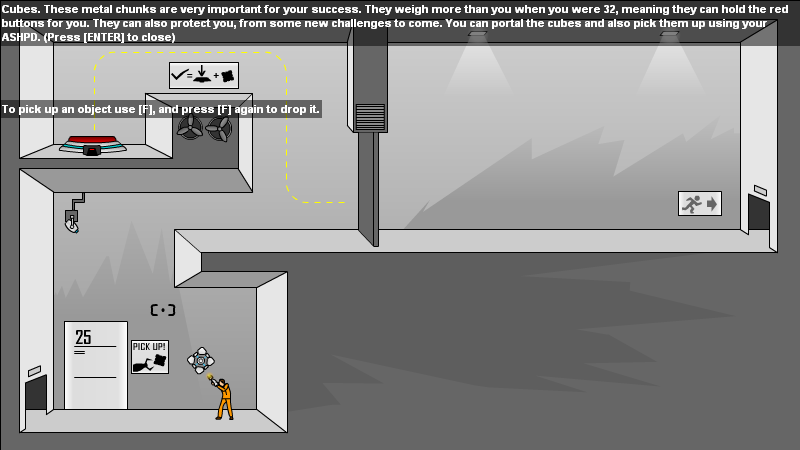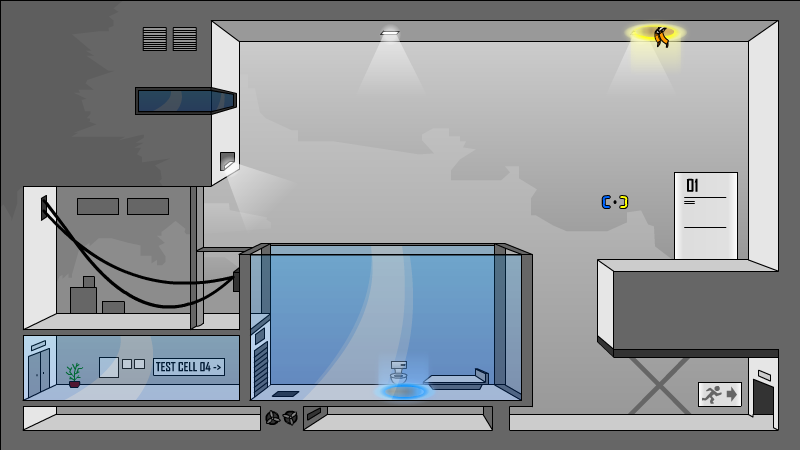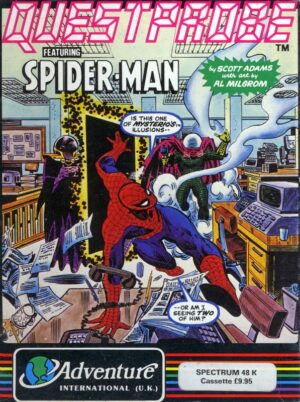Retro Replay Review
Gameplay
Portal: The Flash Version captures the core mechanics of the original Portal in a lightweight 2D Flash environment. You wield the Aperture Science Handheld Portal Device (ASHPD) with simple point-and-click controls, firing blue and orange portals to navigate through each chamber. The limited control scheme—mouse for aiming, two mouse buttons or keys for shooting portals—makes the game instantly accessible, even to players new to puzzle-platformers.
Across 40 increasingly challenging rooms, the puzzles evolve steadily, introducing hazards such as sentry guns, laser-emitting panels, electrified floors, and bouncing energy balls. Each new obstacle forces you to rethink your approach, experimenting with portal placement, momentum builds, and object manipulation. Though the level designs are compact, they’re cleverly constructed to reward creative problem-solving and spatial reasoning.
While this Flash edition lacks some of the physics precision of Valve’s 3D original, it more than makes up for it with tight pacing and constant puzzle variety. Rarely will you feel stuck for too long—if you do, the reset button respawns you immediately, encouraging trial and error without frustration. A built-in timer and simple checkpoint system keep you moving forward, making for a highly replayable experience that’s perfect for quick gaming sessions.
Graphics
Graphically, Portal: The Flash Version adopts a minimalist 2D art style that faithfully evokes the sterile, industrial look of Aperture Science test chambers. Clean lines, block shading, and muted colors give each room a functional, blueprint-like quality, while the vivid blue and orange portals stand out crisply against the gray environment. This visual clarity ensures that gameplay elements and hazards are always easy to spot.
Animations are simple but effective: portals pulse gently at their edges, switches click audibly when activated, and sentry guns rotate and fire with just enough detail to convey danger. Background elements, like overhead pipes and observation windows, add depth through subtle parallax scrolling, hinting at a larger facility beyond the immediate play area. Though there’s no dynamic lighting or particle effects, the graphical presentation remains cohesive and purposeful.
Performance is excellent on virtually any modern browser, with almost no load times between rooms and smooth, lag-free inputs. Sound effects—portal swooshes, turret blips, and mechanical whirrs—are crisp and help to reinforce each interaction. The overall package is a testament to how much engaging gameplay can shine through even modest visual assets.
Story
Like its source material, Portal: The Flash Version offers almost no exposition beyond the promise of “cake” for successful test completion. You begin as an unnamed test subject in an orange jumpsuit, armed only with the ASHPD and the barest hints that you’re part of some faceless experiment. This stripped-down narrative keeps the focus squarely on the puzzles themselves, letting you project your own motivations onto the character.
Between chambers, subtle environmental storytelling appears in the form of signage, hazard markings, and occasionally ominous background details. There’s no chorus of AI taunts or dramatic plot twists—just 40 rooms of escalating challenge and the lingering question of who, or what, is watching from beyond the walls. The minimalist approach reinforces the game’s old-school Flash origins while preserving the sterile, corporate vibe that made the original Portal’s narrative so memorable.
While Portal fans may miss the dark humor and personality of GLaDOS, the absence of a heavy storyline actually works in this Flash version’s favor. It transforms the experience into a pure test of wit and patience, where the only narrative reward is the satisfaction of mastering each ingenious room and inching closer to that elusive cake.
Overall Experience
Portal: The Flash Version is a delightful, free-to-play homage that brings the spirit of Valve’s puzzle classic to anyone with a browser. Its 2D constraints never feel limiting; instead, they distill the essence of Portal’s world and mechanics into bite-sized challenges that you can tackle anywhere. The quick reset times and predictable controls make it an ideal choice for short breaks or longer, focused puzzle sessions.
Certain limitations—such as occasional collision quirks or the lack of a built-in save file—may frustrate perfectionists, but these are minor trade-offs for a completely free experience. The level progression is well-paced, with frequent checkpoints that encourage experimentation without punishing missteps too harshly. If you happen to reload the page, you’ll find yourself back at the start of the current room, ready to try a new solution.
For puzzle enthusiasts and casual gamers alike, Portal: The Flash Version offers an engaging diversion that captures the inventiveness of the original while standing on its own merits. It’s a testament to how a clever gameplay concept can transcend platform limitations and deliver genuine “aha!” moments. Whether you’re revisiting Aperture Science in 2D or discovering portal-based puzzles for the first time, this Flash edition is well worth your time.
 Retro Replay Retro Replay gaming reviews, news, emulation, geek stuff and more!
Retro Replay Retro Replay gaming reviews, news, emulation, geek stuff and more!









Reviews
There are no reviews yet.